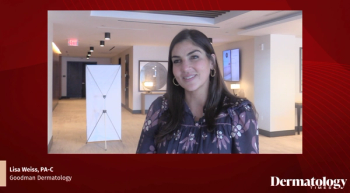
Four steps for NPs, PAs who want to take their careers beyond the clinic
For Nurse Practitioners and physician assistants specializing in dermatology, career options options can take you beyond the clinic. However, making a career change starts with the desire for change and the ambition to find the best fit for one’s professional life and personal life. Here are four steps to initiate that change. Participate in this forum.
Sometimes, the hardest part of making a career change is taking those first steps.
For Nurse Practitioners (NPs) and physician assistants (PAs) specializing in dermatology,
Bellomo, who consults with colleagues who want to make career changes via her company Bellomo Consulting, as well as owns a concierge dermatology and aesthetic practice and a meeting, marketing and management company, says making a career change starts with the desire for change and the ambition to find the best fit for one’s professional life and personal life.
These four steps can make career change a reality.
Step 1: Write down objectives.
“Make an outline of your objectives and think about your timeline,” Bellomo says. “What are you passionate about? Where do you want to go? What is your timeline? What are your goals and objectives?”
Step 2: Research career options and start paving a career path
There are many ways to research career options, including networking, volunteering and seeking mentors, according to Bellomo.
“If people network in the industry they want to be in, it’s amazing where that can take them,” Bellomo says. “But there’s a lot of time involved, including evenings and weekends.”
The sacrifices often result in leads and connections that open doors to new career opportunities, Bellomo says.
Volunteering one’s time or expertise helps providers realize their passions while gaining traction in a career path. For example, writing an article or being a preceptor might not be a return on investment financially, it can be a great return on investment on one’s curriculum vitae if an NP or PA is interested in a career in publishing or teaching, according to Bellomo. Speaking at conferences or presenting continuing medical education training can go a long way in one’s ambition to go into industry or academia.
After 15 years in community dermatology practice, Abby Jacobson, PA-C, landed what she says is her ideal job as a senior medical science liaison and interim medical director for the plaque psoriasis biologic Siliq (brodalumab) at Ortho-Dermatologics. The role, Jacobson says, satisfies her professional desires to work closely with science, patients and in patient advocacy.
Jacobson had long been networking, volunteering and developing professional connections. Her speaking for a pharmaceutical company while in clinical practice led to the connection who years later prompted her to pursue a job with Ortho-Dermatologics.
“I’ve done lots of volunteer work, including being a member of the National Psoriasis Foundation medical board. I’ve served as a committee member for the National Eczema Association,” she says. “I was taking time away from plans, hobbies, gyms, whatever, to volunteer my time and network, which ended up leading to probably the best job of my life.”
Step 3: Make a strategic plan
The strategic plan maps how the provider might meet his or her objectives and when. The financial analysis puts goals and objectives and what’s necessary to meet those into financial perspective, allowing NPs and PAs to determine if a career changes makes financial sense at a particular time in their lives, Bellomo says.
“You have to have patience,” Bellomo says. “Some people take out second mortgages on their homes or business loans to start their own businesses, but I caution against this because the rate of failure is higher than the rate of success when starting a new business. Most dermatology PAs are doing very well financially, so if they’re interested in starting something on the side and not completely leaving clinical practice, there are ways they can do that without really having to risk their current jobs and finances.”
Step 4: Prepare for the big sell
One of the most important things an NP or PA can do to further their careers is to be able to sell themselves, according to Jacobson.
“Most job descriptions are not going to include PAs or NPs, so you have to be ready to explain why you, as a PA or NP, can do that job or volunteer position,” Jacobson says.
These basic steps can help NPs and PAs develop plans of action before quitting their clinical or other jobs, according to Bellomo.
“Even when I decided to leave full-time clinical practice, it was scary. I wasn’t sure if I was going to make it completely on my own,” she says.
But Bellomo did and says the hard work and planning was worth it because Bellomo accomplished her goal of being a self-made entrepreneur.
Newsletter
Like what you’re reading? Subscribe to Dermatology Times for weekly updates on therapies, innovations, and real-world practice tips.

















